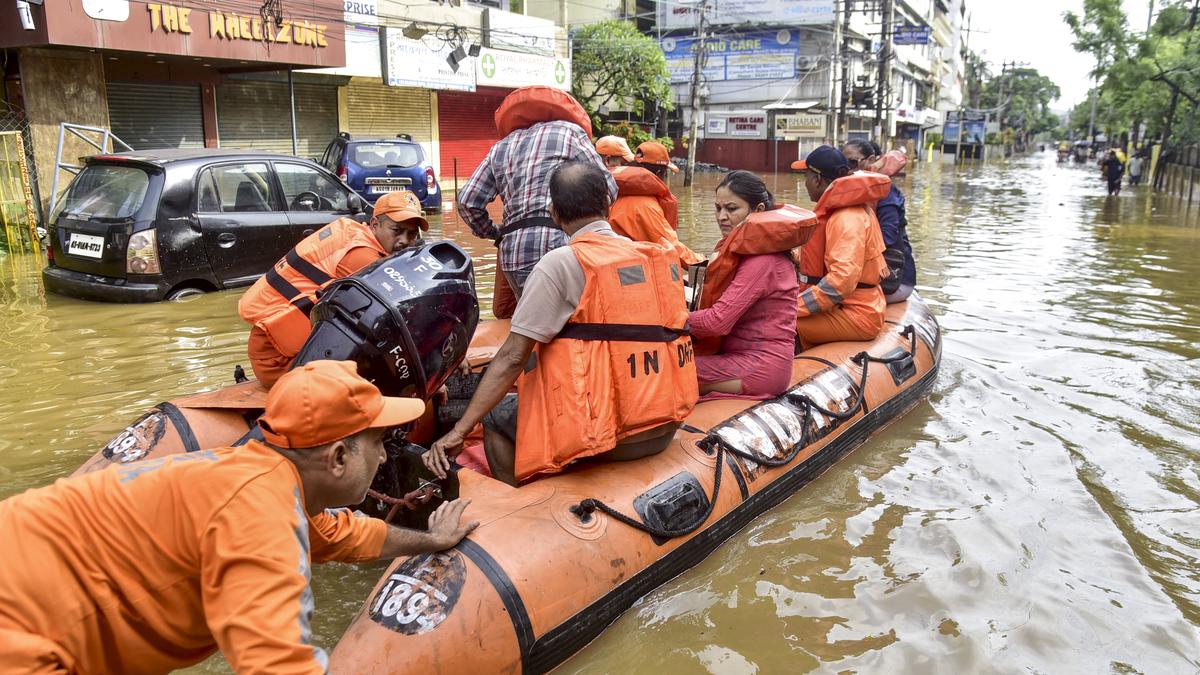 |
|
The recent landslide in Guwahati, Assam, resulting in the tragic loss of three lives, underscores the escalating vulnerability of the region to extreme weather events. Triggered by incessant rainfall, the landslide in the Bonda area highlights the precarious conditions faced by residents living on the outskirts of the city, where rapid urbanization and inadequate infrastructure planning often exacerbate the risks associated with natural disasters. The incident serves as a stark reminder of the urgent need for comprehensive disaster management strategies, including improved early warning systems, robust evacuation plans, and sustainable land use practices. The immediate response to the disaster involved multiple agencies working to provide relief and rescue to affected people, but the long-term challenge lies in addressing the root causes of such vulnerabilities. This includes mitigating the impact of climate change, promoting responsible urban development, and investing in resilient infrastructure that can withstand the increasing frequency and intensity of extreme weather events. The broader context of this tragedy involves widespread flooding in various parts of Assam, particularly in Lakhimpur district, where heavy rains in bordering Arunachal Pradesh have caused significant inundation. The Regional Meteorological Department's issuance of a 'red alert' for several districts, including Chirang, Baksa, Barpeta, and Bongaigaon, further emphasizes the severity of the situation and the need for heightened vigilance. Chief Minister Himanta Biswa Sarma's acknowledgment of the 'abnormal situation' and the implementation of measures such as special casual leave for government employees and the closure of educational institutions reflect the government's efforts to mitigate the impact of the disaster and ensure the safety of its citizens. However, these measures are only temporary solutions, and a more comprehensive and proactive approach is required to address the underlying vulnerabilities that make Assam so susceptible to natural disasters. The geographical location of Assam, situated in a region prone to heavy rainfall and characterized by complex river systems, makes it inherently vulnerable to flooding and landslides. Climate change is further exacerbating these risks, leading to more frequent and intense rainfall events, as well as changes in river flow patterns. The rapid pace of urbanization in Guwahati and other cities in Assam is also contributing to the problem, as unplanned development and encroachment on natural drainage channels increase the risk of flooding and landslides. Deforestation in the surrounding hills further exacerbates the problem by reducing the capacity of the land to absorb rainfall, leading to increased runoff and soil erosion. To address these challenges, a multi-pronged approach is needed that involves not only immediate disaster relief and rescue efforts but also long-term investments in climate resilience and sustainable development. This includes strengthening early warning systems, improving drainage infrastructure, promoting sustainable land use practices, and investing in community-based disaster preparedness programs. It also requires a greater focus on climate change mitigation efforts, both at the local and global levels, to reduce the frequency and intensity of extreme weather events. The recent disaster in Guwahati serves as a wake-up call for the need to prioritize climate resilience and disaster preparedness in Assam. It is a reminder that the costs of inaction are far greater than the costs of investing in a more sustainable and resilient future. The government, the private sector, and civil society must work together to address these challenges and ensure the safety and well-being of the people of Assam.
Source: Three killed in landslide in Guwahati as rain lashes parts of Assam
